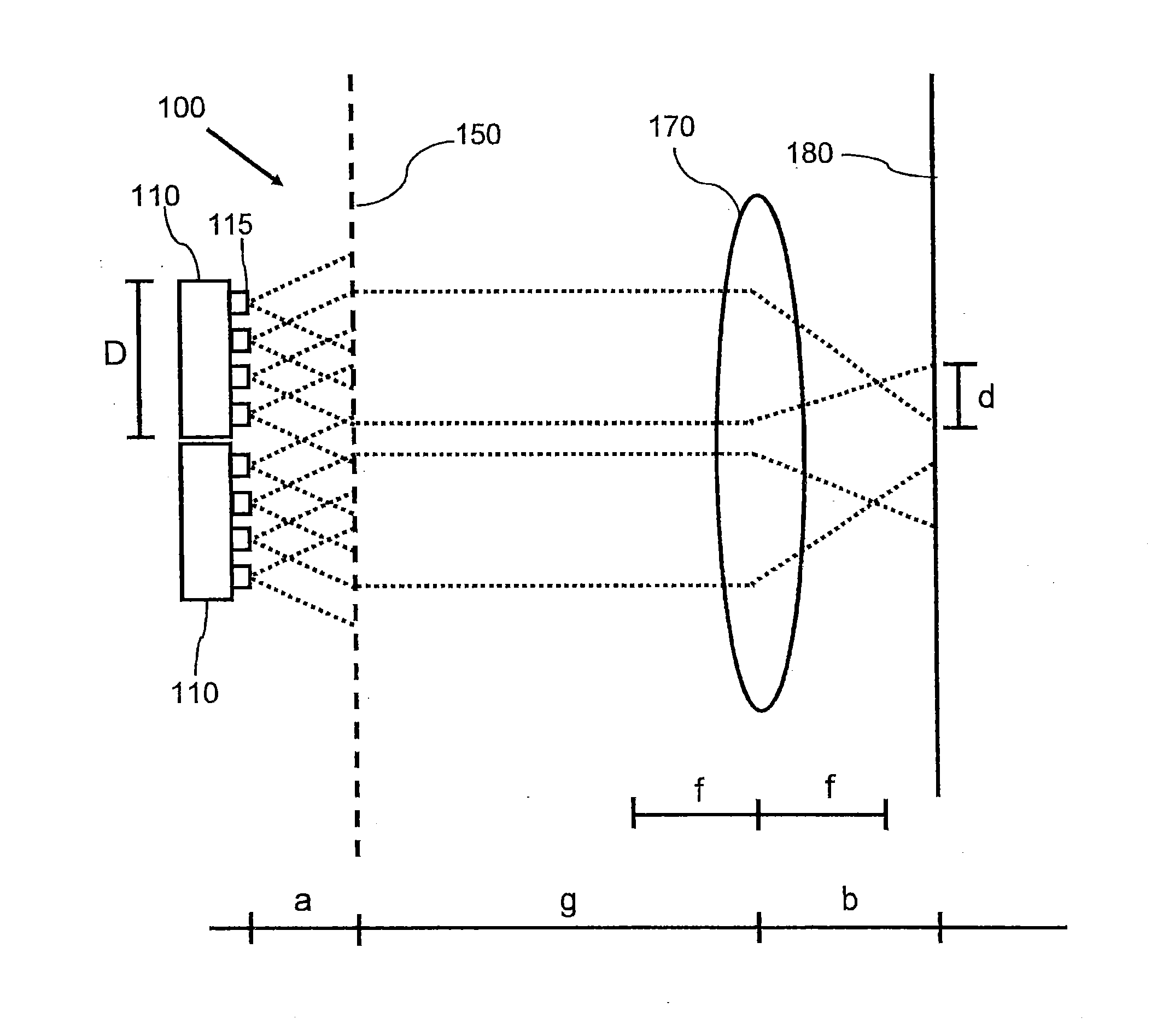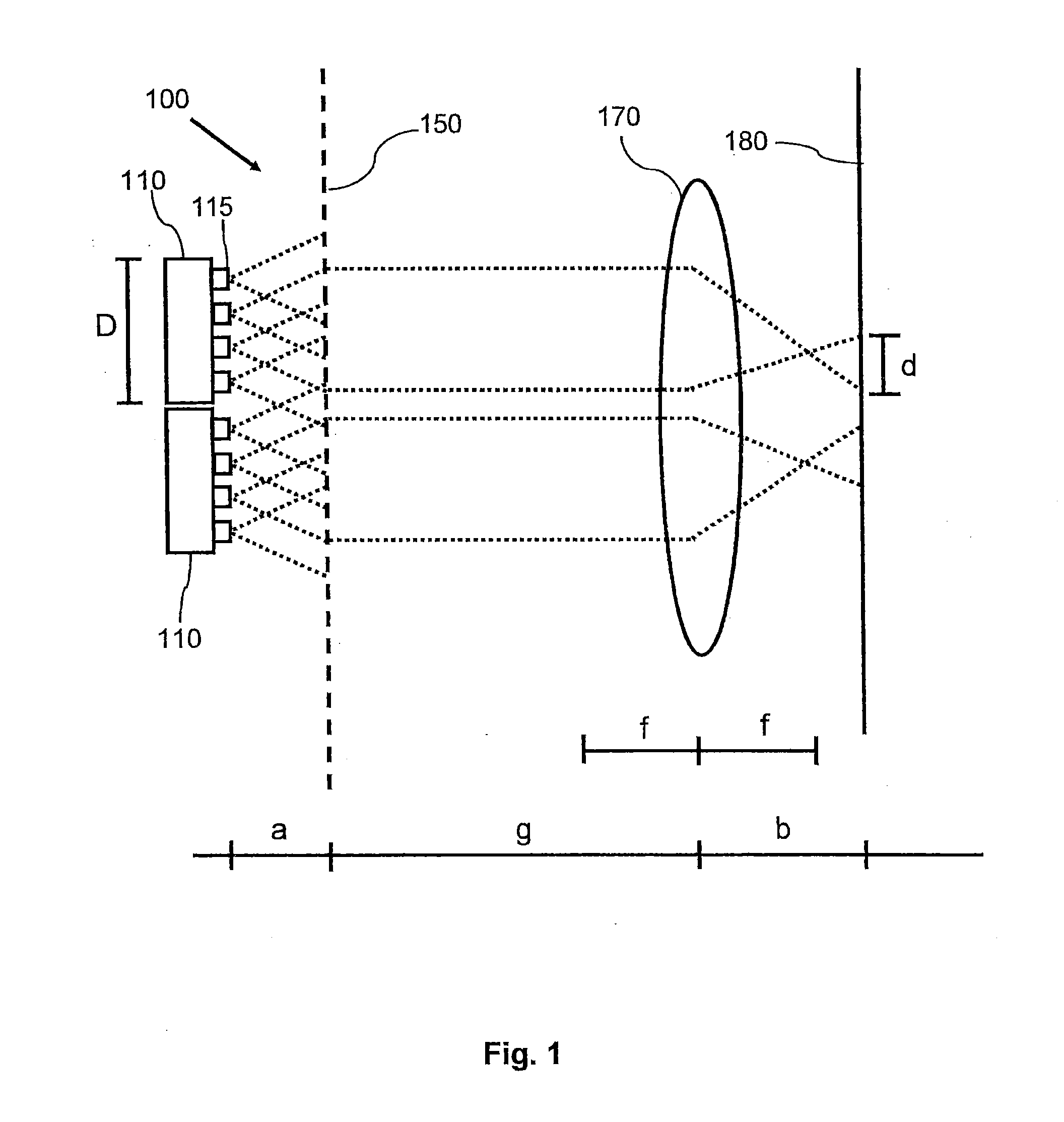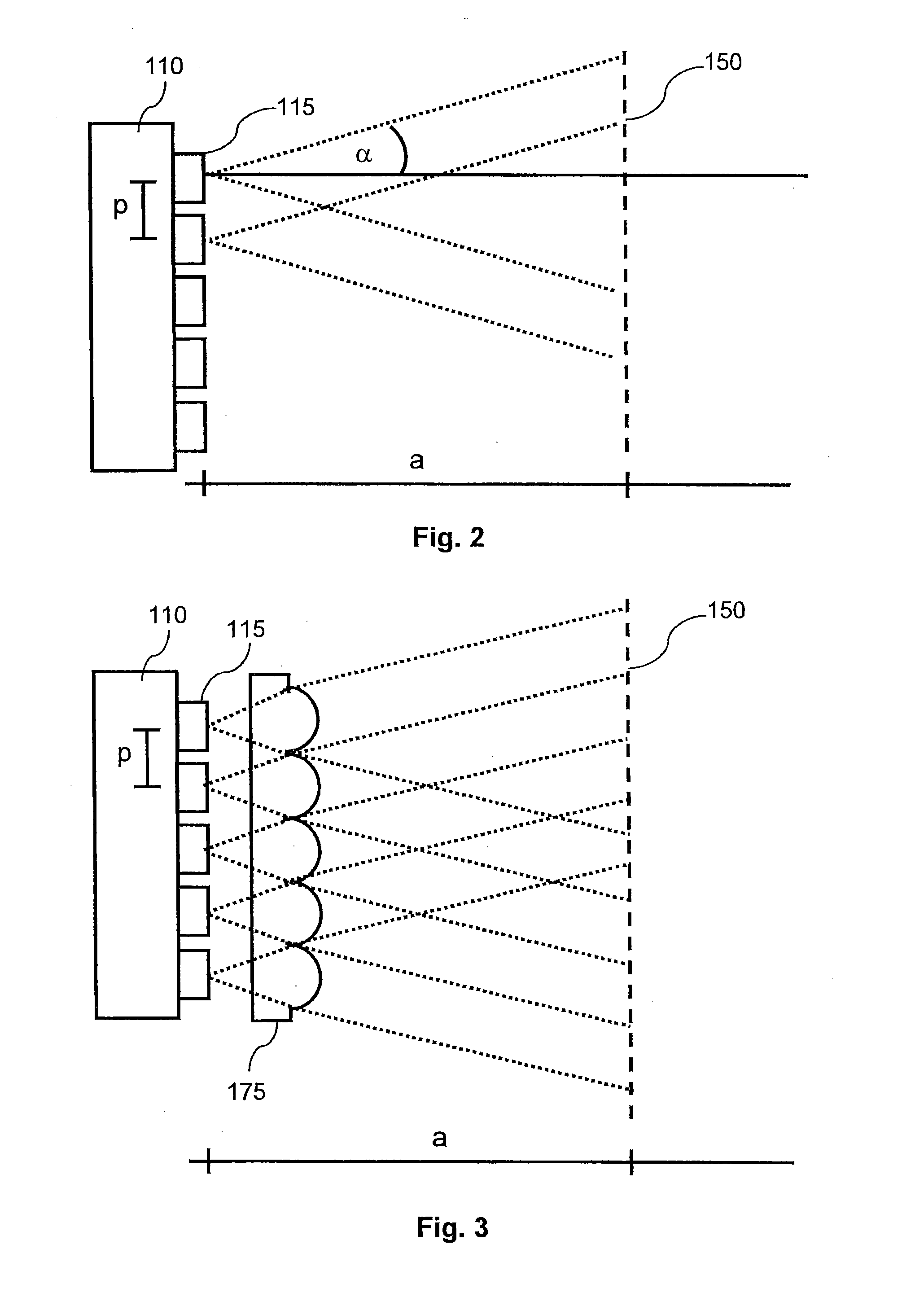Laser Printing System
a laser array and laser printing technology, applied in semiconductor lasers, additive manufacturing processes, instruments, etc., can solve the problems of reliability and service costs of such addressable arrays, and achieve the effects of reducing the alignment effort of laser arrays, improving the homogeneity of total intensity distribution, and manufacturing costs
- Summary
- Abstract
- Description
- Claims
- Application Information
AI Technical Summary
Benefits of technology
Problems solved by technology
Method used
Image
Examples
Embodiment Construction
[0082]Various embodiments of the invention will now be described by means of the Figures.
[0083]FIG. 1 shows a principal sketch of a first laser printing system 100. The laser printing system 100 comprises two laser arrays 110 with semiconductor lasers 115 and an optical element 170. The semiconductor lasers 115 are VCSELs which are provided on a semiconductor chip. In this case all VCSELs 115 of one array 110 are provided on one chip. The optical element 170 is an imaging lens with a focal distance f. The arrays 110 have a width D perpendicular to the plane of the drawings which is diffusely imaged to a working plane 180 by means of the imaging lens. The width d of the diffuse image of each array 110 with the width D in the working plane 180 defines the width of a pixel in the working plane 180. The width of the pixels d is smaller than the width D of the respective array. The images of the arrays are thus demagnified. The distance b between the working plane 180 and the imaging len...
PUM
| Property | Measurement | Unit |
|---|---|---|
| area | aaaaa | aaaaa |
| distance | aaaaa | aaaaa |
| total energy | aaaaa | aaaaa |
Abstract
Description
Claims
Application Information
 Login to View More
Login to View More - R&D
- Intellectual Property
- Life Sciences
- Materials
- Tech Scout
- Unparalleled Data Quality
- Higher Quality Content
- 60% Fewer Hallucinations
Browse by: Latest US Patents, China's latest patents, Technical Efficacy Thesaurus, Application Domain, Technology Topic, Popular Technical Reports.
© 2025 PatSnap. All rights reserved.Legal|Privacy policy|Modern Slavery Act Transparency Statement|Sitemap|About US| Contact US: help@patsnap.com



